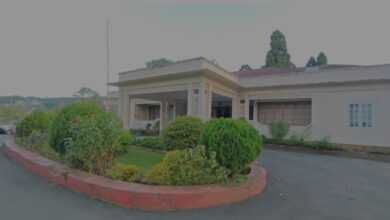Editor,
When Prime Minister Narendra Modi launched the
Smart Cities Mission on June 25, 2015, he did so with the noble intention to promote cities that provide core infrastructure, clean and sustainable environment and give a decent quality of life to citizens of the country through the application of “smart solutions”. However, nine years after the official launch of the Smart City project, several gaping holes in this “smart” project were exposed after a Shillong-based computer hacker successfully hacked into the Ministry of Housing and Urban Affairs on June 25, 2024, extracting over 5 gigabytes of data.
Among these documents, is a confidential report titled ‘Reimagining Streets of Indian Smart Cities’ prepared by the Smart Cities Mission — Ministry of Housing and Urban Affairs (MoHUA) and the Institute for Transportation and Development Policy (ITDP) in December of 2023.
Unfortunately, the compendium that aimed to provide an ‘extensive database’ of street transformations that decision-makers, city engineers, urban practitioners and academicians involved in street transformation projects could use as advocacy material failed to capture several essential user perspectives about the smart project. The lengthy 174-page report, though elaborate, has been unable to analyze core properties of smart city projects, such as (a) interventions on the physical, social, and digital space of cities, (b) the relation to city sectors and ecosystems, (c) engagement of users and stakeholders in decision-making, and (d) impact through optimization and innovation of city processes and routines.
Worst performers
This aside, many here are still hung over the news that Shillong, one of the 100 cities identified by the Centre to be developed as a smart city, was among the 10 worst performers in implementing smart city projects. This news came as a shock to some people working under the Shillong Smart City Project and the ICCC — a project that prides itself on being ‘the brain’ for city planning and operations handed the lovely task of integrating and streamlining various city functions, including surveillance, data processing, emergency response coordination, and the implementation of smart city applications.
Yes, the initiative promises to bring ‘significant technological advancements’ by installing various field devices such as 368 CCTV cameras for surveillance and traffic management, 42 Emergency Call Boxes (ECB), 58 Public Address Systems (PAS), 20 Variable Message Displays (VMDs), 300 streetlights equipped with LED/Smart Lights and Light Point Controllers (LPC), 60 Public Wi-Fi Hotspots, GPS-based vehicle tracking for 50 Solid Waste Management (SWM) vehicles, and 200 Smart Bins was ranked at the lowest 93.
So, what’s the reason behind Shillong’s embarrassing performance? How do we make implementing smart city projects easier? The one factor that would make the biggest difference to the success of smart city programs, in the eyes of the public, is not technology or funding but visionary leadership. At least, that is what executives are crying out for. In the public sector, it is often safer to do today what you did yesterday.
Many governments, including Meghalaya, have effectively admitted as much by incubating innovation hubs to challenge the status quo. Yet to lead change is to take risks and the desi media’s ruthless scrutiny of the public sector — which, in many states, starts with the assumption that taxpayers’ money is being wasted — hardly encourages bureaucrats or politicians to think outside the box. A leader’s long-term vision needs to be inclusive, encouraging collaboration between agencies and across departments. Top-down command and control management will not genuinely unite stakeholders in pursuit of a common goal — nor will it encourage the sharing of knowledge that executives believe will smooth implementation.
Though the term ‘smart cities’ is somewhat new here, the idea isn’t. Some experts claim ancient India (particularly the Indus Valley) used elements of the concept, such as using ‘technology’ to make citizens’ lives easier. The water drainage system is just one way they did that. But what makes a city “smart” in today’s day and age? Is city smartness achieved through the automation of city infrastructure? Is a smart city one that uses technology to provide services and solve city problems like improving transportation and accessibility and social services, promoting sustainability and giving its citizens a voice? What’s your definition of a smart city?
Yours etc,
JM Kharkongor
Shillong
Also read:






